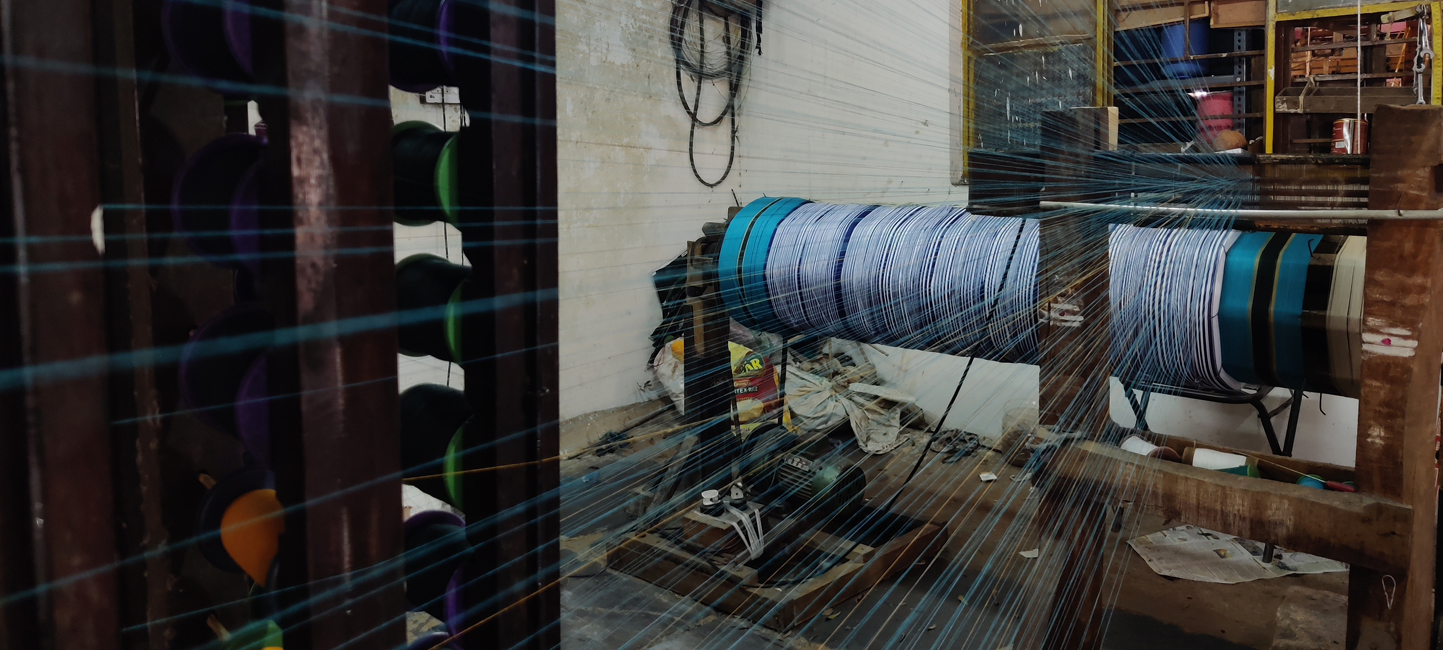
What exactly is handloom or handwoven fabric? How is it different from other kinds of fabric like powerloom and mill-made?
Any fabric is produced by the interlacement of two kinds of yarns – the warp which makes the length of the fabric and the weft which interlaces with the warp and makes the width of the fabric. This interlacement of the warp and weft is called weaving and is done on a loom.
A handwoven fabric is one which is woven on a loom that is operated by hand, also known as a handloom. The most common handloom used by weavers is a pitloom, where the weaver sits on the floor with his feet inside a pit. A power-loom fabric uses electricity to operate the loom and its productivity is significantly higher than a handloom. It is said that one powerloom replaces 14 handlooms. Mill-made cloth is that which is produced in large industrial mills, rolling out several thousand metres of cloth per day, requiring huge infrastructure and electricity.
Are Handloom and Khadi the same?
Cloth that is woven on a hand-operated loom is called ‘Handloom’. The difference between Handloom and Khadi is that Khadi fabric is handwoven using hand-spun yarn whereas the handloom fabric uses mill-spun yarn. The main difference is in the yarn – the rest of the processes involved in weaving are similar. Thus all ‘Khadi’ is handloom fabric, but all handloom fabric is not ‘Khadi’.

How is Handloom fabric woven?
Yarn cannot be directly put on the loom. It has to undergo several processes, collectively called “Pre-loom processes” for it to be used on a loom. In handwoven fabric, all these pre-loom processes are also done by hand by the weavers or by members of the community. So, when you buy a handloom or handwoven fabric, you can be assured that every square cm of the fabric has been touched and fashioned by a human hand into the lovely fabric that you are holding!
Yarn for handloom is available in ‘hanks’ which is first hand-dyed by the dyer. It is then handed over to the weaver, who then does the different pre-loom techniques – Bobbin winding, Warping, Sizing, Denting or Twisting, Dressing, Weft Pirn Winding – before he/she starts weaving. After the weaving is completed, the cloth is removed from the beam and is ready to be sold.
Handloom weaving is a community activity – it is not possible for one weaver to weave just by him/herself. The basic weaver household may consist of atleast one man and a woman working together – one predominantly does all the pre-loom and the other does weaving. Some pre-loom activities are also done by other members in the community. Some weaving techniques require both the man and the woman to weave together. In the north-east which contributes to almost half of the country’s looms and weavers, it is the women who do the entire weaving including the pre-loom processes.
How prevalent is handloom weaving in India?
Handloom weaving is the second largest employment generating sector in the country. More than 30 lakh households are engaged in handloom weaving and its allied occupations. India is also the home to 95% of the world’s total handwoven fabric. Moreover, the wide variety of handlooms making different kinds of products – from towels and blankets to the most exquisite Benaras brocades – Indian handlooms showcase a continuing textile heritage and a vast repertoire that has no parallel in the world.
Handloom weavers mostly work out of their homes in rural India, thus making it a village industry or ‘gramodyog’. Today, the handloom weavers works for one of the following: A. Handloom Weaver Cooperative Societies established by the government, B. Master weavers who are usually local entrepreneurs from the area, who supply the yarn and market the end product, 3. NGOs or producer enterprises promoted by them.
To sum up, handloom fabric celebrates the human hand! We still have more than 3 million people in India alone, who are repositories of traditional knowledge and skill on how to make fabric entirely by hand, in an age where everything is mechanized and industrialized. It is for us, as consumers, to recognize and value the potential of the human hand.
Thus the productivity is almost 14 times that of a handwoven fabric.
- Samyuktha, is a textile designer, a handloom enthusiast and a learner with a keen interest in different aspects of the handloom weaver community. She works with weaver enterprises in AP and Telangana.
Her blog page is handloomexpress.wordpress.com
